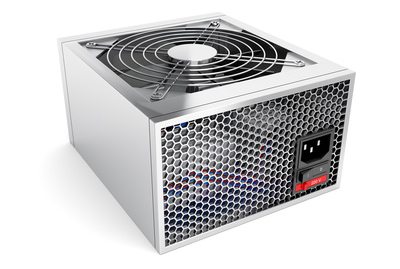
Computer Technicians 103: Knowing your power (supply)
Last week, on Technibble: CT 102 we discussed the best way to prepare your software toolkit. Today, however, we’re back on the hardware railroad to discuss the one component your whole computer depends on: the Power Supply Unit. Any computer, no matter how perfectly planned, prepared or assembled, will fail to boot, sputter, smoke and eventually die if connected to an inadequate, weak or just plain faulty power supply. Picking a decent power supply isn’t much of a science; however, knowing what voltages run through your computer is, and knowing it will come in handy once you start actually repairing, as it might indicate what exactly went wrong with the powersupply. While you shouldn’t attempt to repair a PSU at any cost, knowing where the trouble lies will help you fill a replacement claim if the supply is still under warranty.
The Voltage Collection
The first thing you need to learn is what different voltages (measured in Volts, V) there are inside your computer, what they’re used for, what else there is beside power lines, and what to do in order to avoid disaster when digging under your computer’s hood. Since there’s no need for it, there is no AC (alternating current) power coming from the PSU to the rest of the computer – it’s all DC (direct current). Basically, all lines on the various power connectors can be divided into three categories: power, ground and signal. All the pins are color-coded according to the table beside this article.
The three most common voltages encountered are +12V, +5V and +3.3V. The first one, +12V is connected wherever there’s a motor spinning or a bigger power sink – optical drives and hard-disks are the most obvious examples, although the motherboard needs it as well. The second one, is used by electronic circuitry, again, most commonly on drives and the motherboard, because most integrated circuits were designed with +5V in mind, because it’s a convenient voltage. The final one, +3.3V, is essential to the motherboard (and newer SATA drives), and most low-level voltages (the CPU core voltage and the RAM voltage) used on the motherboard are derived from it. Two of the voltages also have their counterparts, -5V and -12V, and those are used by some expansion cards – these voltages are the exact opposites of their positive brothers… but opposite compared to what?
This is where the ground comes in. In layman’s terms, GND can be considered +0V – although it’s not electrotechnically correct, you can basically assume any positive voltage is an electricity source, and every ground is an electricity sinkhole. The opposite applies for negative voltages, since they’re below ground level. Nearly all GND lines are situated on the same row and directly beside their assigned voltages, because you can not always guarantee all GND lines are on the same voltage. However, in most cases, you can assume all GND lines are on the same level, sometimes called a common ground (COM) Note that the special.
Finally, there are special lines. Some special lines are similar to voltage lines in the sense that they have an assigned voltage. However, their primary function is communication between the PSU and the motherboard, signalling things like proper PSU activity or functioning as a PSU kickstarter. They will be explained later on, together with the main ATX connector.
Despite the various voltages, which can be measured using a multimeter, they’re not the only ones vital to the PSU. Although all pin circuits should, when measured from power pin to ground pin, show a voltage within +-5% (for +3.3V and +5V) or +-10% (+-12V), current is equally as important. Current (measured in Amperes, A) is the amount of charge the power supply can put out through a specific voltage circuit per second. A power supply usually gives out tens of amperes on +5V and +3.3V rails, since most of the computer is power-hungry circuitry. +12V usually gets just as much, and -12V is used rarely enough to warrant under 1A. Note that you can sometimes guess the amount of current running through a wire by its width – the thicker the wire, the more current can flow through it.
Finally, the overall value of the PSU is its power (measured in Watts, W) – no doubt you’ve seen advertisements about 300W, 350W, 400W or even whooping 700W supplies – it can output that amount of raw power… in ideal circumstances. In reality, you won’t ever get the whole power out of it. Most decent PSU manufacturers list the power efficiency factor on their websites – an average value would be 70%, so a 350W PSU can output around 275W of power. The power supply output can be measured and calculated, but it involves several measurements of both voltage and current and a foot-long calculation – we’ll leave that as your homework.
Session expired
Please log in again. The login page will open in a new tab. After logging in you can close it and return to this page.

[…] Read more… Tags : how to fix a computer power supply […]